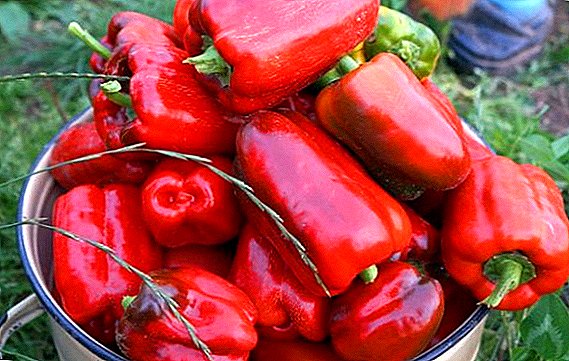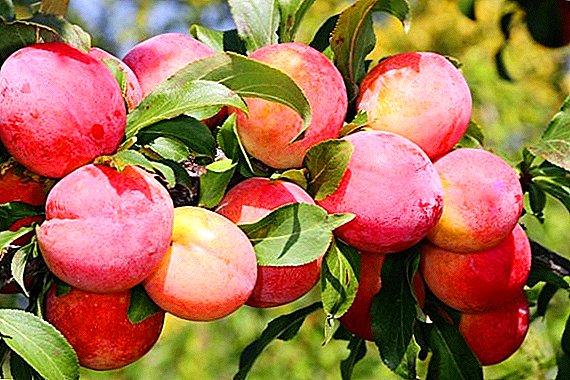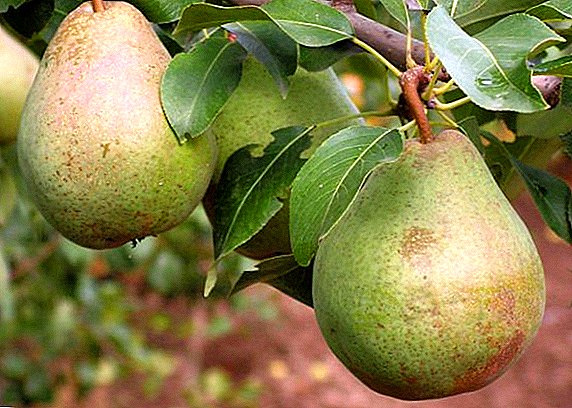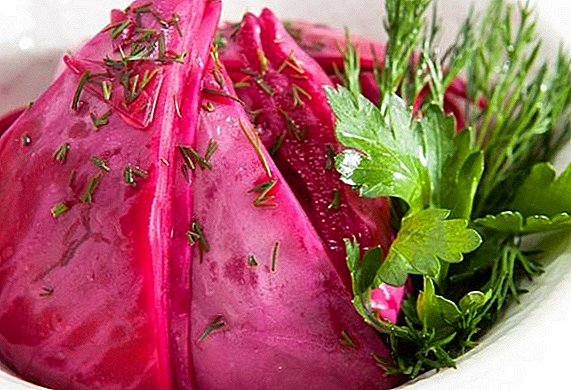 There are many recipes for sauerkraut, which are popular in different countries of the world, and the secret ingredients and subtleties of cooking this dish are passed on from generation to generation. In this article we will look at one of the most delicious Georgian sauerkraut recipes, which are increasingly being prepared by housewives as preparations for the winter or for immediate consumption.
There are many recipes for sauerkraut, which are popular in different countries of the world, and the secret ingredients and subtleties of cooking this dish are passed on from generation to generation. In this article we will look at one of the most delicious Georgian sauerkraut recipes, which are increasingly being prepared by housewives as preparations for the winter or for immediate consumption.
About the taste of cabbage in Guri
Georgian cabbage in Georgia is called "Mzhave", the recipe consists of several ingredients, thanks to which the dish turns out very tasty. It is prepared thanks to the natural processes of ripening without the addition of vinegar, so the taste of the snack is softer and more pleasant.
Did you know? There are various options for sauerkraut, which are considered national dishes in different countries. For example, in Germany, sauerkraut is used almost daily and is added to various dishes, the Germans call such a dish “Zauerkraut”, and in Korea they prepare sauerkraut, which is called “kimchi”.
Adding beets gives the dish a bright pink color and a pleasant sweetish flavor. Often, lovers of a more savory bright flavor are added to the cabbage in Georgian style hot pepper. But even if you do not like spicy food, it is recommended to add garlic to the main vegetable, which will not only give a great spicy garlic flavor, but also make the dish more piquant. Celery and other spices finally complement the picture, mixing together, they create a bouquet of a unique pleasant aroma.  Only salt is added to the dish, sugar is not contained in the recipe, so the cabbage taste is more often characterized as salty, without sweetness, but, still, the sweetness still appears due to additional ingredients.
Only salt is added to the dish, sugar is not contained in the recipe, so the cabbage taste is more often characterized as salty, without sweetness, but, still, the sweetness still appears due to additional ingredients.
If the cooking technology of the dish in question has been observed, the vegetables are slightly soft on the outside and crispy on the inside.
We advise you to read about the types of cabbage and their beneficial properties: white, red, cauliflower, Peking, Savoy, broccoli, kohlrabi, romanesco, pak choi, kale, and sauerkraut.
Kitchen equipment and appliances
To prepare sauerkraut in Georgian, you need to stock up the following equipment:
- a knife for grinding ingredients;
- a board on which ingredients will be cut;
- scales in order to measure the amount of ingredients for the most balanced taste;
- saucepan for boiling pouring;
- a container with a lid for laying the ingredients where the pickling process will take place;
- plates for intermediate storage of chopped vegetables;
- plates, so that they press down the contents of the container in the process of marinating.
Important! To simplify and speed up the process of grinding ingredients, you can use a food processor with suitable nozzles.
Ingredient list
To prepare a tasty dish, you must stock up:
- white cabbage in the amount of 1 kg;
- beets - 400 g;
- garlic - 60 g;
- celery leaves - 50 g;
- hot pepper - 1 piece (small);
- salt - 50 g;
- water - 1 l.

Read also about the methods of harvesting cabbage: white, red, cauliflower, broccoli; how to quickly ferment and pickle cabbage.
Step by Step Cooking Process
Let us consider in detail all the stages of cooking sauerkraut in Georgian:
- To start prepare the fill. To do this, pour water into a saucepan and add salt in accordance with the recipe. Stir the liquid thoroughly and place on the stove so that the salt dissolves completely and the pot boil.
- In the meantime, it is necessary to start preparing the basic ingredients. First of all, take care of the cabbage. Head out washed, dried with a paper towel to get rid of excess moisture.
- Next, cut the head in half, remove the stalk and cut into squares of medium size 7 by 7 cm. In order for the sheets not to crumble, but at least somehow hold together, it is recommended to cut half of the head first “slices” from the edge of one side to the center of the back side. Then each "slice" is divided with a knife into three parts.
- After the main vegetable is cut, you should begin to prepare the beets. It is pre-peeled, washed thoroughly and cut into the thinnest possible rings (1-2 mm thick) with a knife or a combine if there is a necessary nozzle.
- Next you need to cut the well-washed celery leaves. It is necessary to chop large, so that after the dish is ready, celery can be easily removed from the finished snack.
- Hot pepper is cut into small rings, so that later it can also be quickly removed from the dish at any time.
- Garlic must be peeled and cut into small pieces, small slices cut in half, large - into 4 pieces.
- When all the ingredients are prepared, you can start laying vegetables in a container, where souring will occur. For this, it is convenient to use a small plastic bucket with a lid or any plastic container that fits in volume.
- At the bottom of the selected container stack beet rings in a single layer. Over carefully, in order not to violate the integrity of the pieces, the main vegetable is also laid in one layer. Next, put on the cabbage a little garlic, hot pepper and celery. Continuing to lay out the layers alternately is necessary until the ingredients run out. The last layer must be beets, it will allow a good color layer of cabbage, which is located below.
- On top of the vegetables pour boiling pour. Do not rush, try to ensure that all vegetables are processed boiling mixture.
- Next, set the plate on top so that there is a slight pressure on the vegetables, and pouring completely covered them.
- After that, a deep bowl is placed on top of the plate so that when its convex bottom touches the lid of the bucket on the vegetables, there is a slight pressure on a constant basis. The lid is not recommended to close completely, on the one hand, leave it ajar, so that the vegetables have access to air. Only in this case, the process of ripening will occur correctly.
- In this state, leave the container for 4 days, during which time the vegetables will be completely ready for consumption.











Important! If you want to speed up the process of cabbage mowing in Georgian, add 30 ml of 9% vinegar to it during cooking. Thus, the cabbage can be eaten already after 2 days.
What to apply to the table
Cabbage in Georgian is an excellent snack that warms up the taste buds and contributes to better appetite. This dish can be served on the table separately, pre-watered with oil and sprinkled with herbs to taste. Well combined appetizer with meat dishes.  In Georgia, this snack is often consumed with lobio. Pickled vegetables are also complemented by fish and vegetable dishes. Lovers of pickles can eat these vegetables just like that, without any additional dishes. Given the excellent taste of cabbage in Georgian, often a part of the billet is eaten immediately after cooking.
In Georgia, this snack is often consumed with lobio. Pickled vegetables are also complemented by fish and vegetable dishes. Lovers of pickles can eat these vegetables just like that, without any additional dishes. Given the excellent taste of cabbage in Georgian, often a part of the billet is eaten immediately after cooking.
Learn how to pickle tomatoes (greens), cucumbers, mushrooms, mushrooms, lard, and prepare beets (frosting, drying), horseradish with beets.
Where and how much can be stored
After the appetizer is ready for consumption, it is necessary to shift it into a convenient container, which can be tightly closed with a lid. You can store pickled vegetables in the refrigerator or cellar for 2-3 months. Storage temperature should not exceed +8 degrees. Over time, the cabbage is impregnated with the flavors and tastes of additional ingredients and becomes even tastier.
During storage, vegetables become softer, so if you prefer a crispy snack, harvest the amount to consume it in 3-4 weeks.
Did you know? Old Russian sauerkraut recipes contain the secret ingredient - cranberries. This berry not only gives a special tartness to the finished dish, but also contributes to a longer storage of fermented vegetables due to the high content of benzoic acid - a natural preservative.
Video: Georgian cabbage recipe
Variants of cooking cabbage with beets


Thus, cooking Georgian cabbage at home will not be difficult. To make the dish tasty and fragrant, you need to respect the proportions of the ingredients and follow the instructions for cooking.












